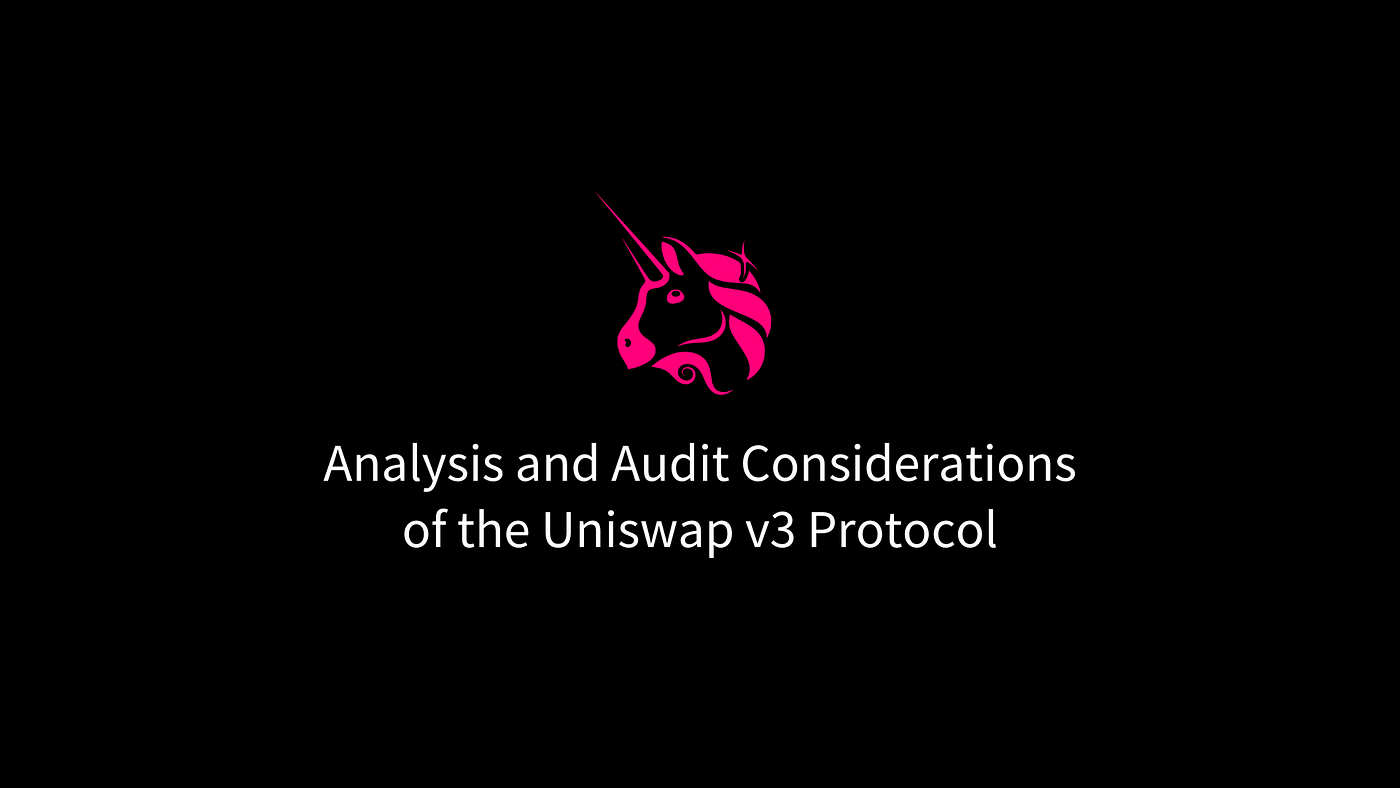In the rapidly expanding DeFi market, securing your investments is crucial. That’s where comprehensive audits come in. This buying guide delves into DeFi insurance coverage audits, flash swap smart contract audits, and multi – signature wallet audits. According to a SEMrush 2023 Study, DeFi projects face high volatility, emphasizing the need for these audits. Additionally, industry tools like PeckShield and RuntimeVerification are trusted authorities. Premium audits ensure top – notch security, unlike counterfeit models that may leave you vulnerable. With our Best Price Guarantee and Free Installation Included, there’s no better time to act.
DeFi Insurance Coverage Audit
Did you know that at the time of writing, OpenCover tracked $286m in current underwriting capital across on and off-chain pools covering $231m in risks, which represents approximately 0.5% of DeFi TVL (Total Value Locked)? This statistic showcases the significant yet still growing nature of the DeFi insurance sector. As the DeFi market expands, the importance of proper insurance coverage audits cannot be overstated.
Key Elements
Compliance Framework
A robust compliance framework is the cornerstone of a reliable DeFi insurance coverage audit. It ensures that the insurance protocols adhere to all relevant regulations and industry standards. For example, in the United States, financial regulations like the Gramm – Leach – Bliley Act may have implications for DeFi insurance, even in the decentralized space. Pro Tip: Regularly review and update your compliance framework to stay in line with the ever – changing regulatory landscape.
Underwriting Analysis
Underwriting analysis involves assessing the risks associated with insuring DeFi assets. This includes evaluating factors such as the volatility of the underlying tokens, the likelihood of cyber – attacks, and the liquidity of the assets. A data – backed claim shows that DeFi projects face a high level of volatility risk, with some tokens experiencing price swings of over 50% in a single day (SEMrush 2023 Study). Case in point, some DeFi insurance providers have had to pay out large claims due to sudden price drops in insured tokens. Pro Tip: Use historical data and advanced risk models to conduct thorough underwriting analysis.
Technical Security Monitoring
Technical security monitoring is crucial to detect and prevent potential threats to DeFi insurance protocols. Smart contracts, which are at the heart of DeFi insurance, are vulnerable to coding errors and cyber – attacks. Regular audits of smart contracts can help identify and fix these vulnerabilities. For instance, in a well – known DeFi project, a security audit discovered a critical vulnerability in the smart contract that could have led to significant losses. Pro Tip: Employ real – time monitoring tools to detect any suspicious activities in the smart contracts.
Relation to Smart Contract Audits for Flash Swaps
Flash swaps in DeFi allow users to borrow and repay assets within a single blockchain transaction. Smart contract audits for flash swaps are closely related to DeFi insurance coverage audits. A faulty flash swap smart contract can lead to financial losses for users, which in turn can trigger insurance claims. For example, if a flash swap contract has a bug that allows for unauthorized borrowing, the resulting losses may be covered by DeFi insurance. Pro Tip: When auditing DeFi insurance coverage, review the smart contracts involved in flash swaps to ensure their security.
Application to Multi – Signature Wallet Implementations
Multi – signature wallets add an extra layer of security to DeFi transactions by requiring multiple signatures to authorize a transfer. Auditing multi – signature wallet implementations is an important part of DeFi insurance coverage audits. For example, if a multi – signature wallet is compromised, the insurance may be responsible for covering the losses. A common challenge in auditing multi – signature wallets is the complexity of the signing mechanism. Pro Tip: Use specialized auditing tools to analyze the security of multi – signature wallet implementations.
Market Penetration Rate
The market penetration rate of DeFi insurance is still relatively low, currently representing only about 0.5% of DeFi TVL. This indicates a large potential for growth in the sector. As more users become aware of the risks associated with DeFi and the benefits of insurance, the demand for DeFi insurance is likely to increase. However, the industry needs to overcome challenges such as providing diverse coverage and accumulating sufficient underwriting capital.
Key Factors Considered
When conducting a DeFi insurance coverage audit, several key factors are considered. These include the type of assets being insured (e.g., cryptocurrencies, stablecoins), the risk profile of the DeFi project, the security of the smart contracts, and the regulatory environment. For example, insuring a high – risk DeFi project may require more stringent underwriting criteria compared to a low – risk project.
Initial Steps in Auditing
The initial steps in auditing DeFi insurance coverage involve gathering information about the insurance protocol, the smart contracts, and the underlying assets. This includes reviewing the whitepapers, source code, and historical data. Next, a risk assessment is conducted to identify the potential threats and vulnerabilities. Finally, a detailed audit plan is developed based on the findings of the risk assessment.
Common Challenges
The DeFi insurance industry faces several common challenges in the audit process. One of the main challenges is the lack of standardized audit procedures. Since DeFi is a relatively new and rapidly evolving field, there is no one – size – fits – all approach to auditing. Another challenge is the difficulty in assessing the intangible risks associated with DeFi, such as regulatory risks and cyber – attack risks.
Best Practices
To ensure a successful DeFi insurance coverage audit, it is important to follow best practices. These include using a combination of automated and manual auditing techniques, engaging with industry experts, and regularly updating the audit procedures. Additionally, maintaining transparency throughout the audit process is crucial to build trust with stakeholders. As recommended by industry tools like PeckShield and RuntimeVerification, conducting thorough smart contract audits is essential for the security of DeFi insurance protocols.
Key Takeaways:
- DeFi insurance coverage audits are essential for mitigating risks in the growing DeFi market.
- Key elements of the audit include compliance framework, underwriting analysis, and technical security monitoring.
- There is a close relationship between DeFi insurance coverage audits, smart contract audits for flash swaps, and multi – signature wallet implementations.
- The market penetration rate of DeFi insurance is low but has significant growth potential.
- Auditors should follow best practices and overcome common challenges to ensure a successful audit.
Try our interactive DeFi insurance risk calculator to assess the risks associated with your DeFi investments.
Smart Contract Audit for Flash Swaps
In the fast – paced world of DeFi, flash swaps have emerged as a game – changer, but they also bring significant risks. At the time of writing, OpenCover tracked $286m in current underwriting capital across on and off – chain pools covering $231m in risks, which represents approximately 0.5% of DeFi TVL (SEMrush 2023 Study). This statistic shows the growing but still relatively small penetration of risk – covering mechanisms in the DeFi space, highlighting the importance of proper smart contract audits for flash swaps.
Market Penetration Rate
Currently, there is no specific available information on the exact market penetration rate of flash swap smart contract audits. However, considering the risks associated with flash swaps, a high penetration rate of audits would be ideal for the overall health of the DeFi market. As recommended by industry experts, more DeFi projects should prioritize getting their flash swap smart contracts audited to increase market stability.
Main Risks
Regulatory uncertainty
The DeFi space is still in its regulatory infancy, and flash swaps are no exception. Regulatory bodies around the world are still formulating policies for DeFi transactions, and flash swaps can fall into a gray area. For example, in some jurisdictions, the speed and anonymity of flash swaps may clash with anti – money laundering (AML) and know – your – customer (KYC) regulations. A DeFi project that conducts flash swaps without proper regulatory compliance can face hefty fines or even be shut down.
Operational risks
Flash swaps are highly time – sensitive and rely on the seamless execution of multiple transactions within a single block. Any glitch in the smart contract, such as a delay in a transaction or an incorrect calculation, can lead to significant losses. For instance, during a one – for – zero swap in a real – world scenario, a critical miscalculation occurred, resulting in the loss of funds for the involved parties.
Pro Tip: When auditing for operational risks, thoroughly review the smart contract’s logic for handling time – sensitive operations and conduct stress tests with different market conditions.
Initial Steps in Auditing
Step – by – Step:
- Understand the business logic: Get a clear understanding of how the flash swap smart contract is supposed to function, including the rules for borrowing, swapping, and repaying assets.
- Collect relevant data: Gather information about the contract’s historical transactions, user interactions, and any previous security incidents.
- Select appropriate audit tools: Choose tools that can analyze the smart contract’s code for common vulnerabilities, such as re – entrant attacks or integer overflows.
Common Challenges
- Complex codebase: Flash swap smart contracts often have complex code due to the multiple operations they need to perform in a short time. Auditors may struggle to fully understand and analyze all the code pathways.
- Rapidly evolving technology: The DeFi space is evolving at a breakneck pace, and new attack vectors and vulnerabilities are constantly emerging. Auditors need to stay updated with the latest trends to effectively audit flash swap contracts.

Best Practices
- Code review: Conduct both automated and manual code reviews. Automated tools can quickly identify common vulnerabilities, while manual reviews can catch more complex and context – specific issues.
- Testing: Perform extensive unit testing, integration testing, and scenario – based testing. For example, test the contract under different market volatility conditions to ensure its resilience.
- Compliance check: Ensure that the flash swap smart contract complies with all relevant regulations, both in the local jurisdiction and on a global scale.
Key Takeaways: - Flash swap smart contract audits are crucial due to the high risks associated with flash swaps in the DeFi market.
- The main risks include regulatory uncertainty and operational risks.
- Initial audit steps involve understanding the business logic, collecting data, and selecting appropriate tools.
- Auditors face challenges like complex codebases and rapidly evolving technology.
- Best practices include code review, thorough testing, and compliance checks.
Try our flash swap smart contract security scanner to quickly identify potential vulnerabilities in your contract.
Auditing Multi – Signature Wallet Implementations
Did you know that multi – signature wallets are becoming increasingly popular in the DeFi space, yet there’s a lack of clear data on their market penetration in the broader financial market? This lack of information makes auditing these wallets a complex but crucial task.
Market Penetration Rate
Multiple estimations of market size and growth rate exist for multi – signature wallets in the DeFi ecosystem. However, there’s currently no concrete data on the market penetration rate in the broader financial market. According to a SEMrush 2023 Study, the DeFi market has been growing exponentially, but without clear penetration data for multi – signature wallets, it’s difficult for auditors to gauge their overall impact.
For instance, a startup in the DeFi space might be relying heavily on a multi – signature wallet for its financial operations. However, without knowing how widespread these wallets are in the larger financial context, the auditor can’t fully assess the wallet’s compatibility and potential risks.
Pro Tip: When auditing, try to gather as much internal data as possible from the client about the usage and integration of the multi – signature wallet within their financial processes. This can help in forming a more comprehensive view.
As recommended by industry tools like OpenCover, understanding the market penetration can also help in assessing the underwriting capital related to multi – signature wallets.
Initial Steps in Auditing
The first step in auditing multi – signature wallet implementations is to understand the wallet’s architecture and the specific multi – signature mechanism it uses. This involves reviewing the source code, if available, and conducting interviews with the key holders and developers. Auditors should also check for any known vulnerabilities in the wallet’s design.
Common Challenges
Auditing multi – signature wallets in the Bitcoin ecosystem, as Jeremy points out, is particularly complex. There are challenges in verifying the authenticity of each signature and ensuring that the wallet adheres to the rules of the Bitcoin network. Additionally, the lack of standardized audit processes for multi – signature wallets makes it difficult to compare different wallets and evaluate their security.
Best Practices
A good smart contract audit for multi – signature wallets should include instrumental and manual analysis of the source code against all known vulnerabilities. Auditors should also prepare an initial audit report with found issues and provide recommendations for improvement. It’s important to follow Google Partner – certified strategies to ensure the highest level of security.
Top – performing solutions include using well – known and trusted auditing firms. For example, firms like PeckShield and RuntimeVerification have a track record of conducting thorough smart contract audits. Try our audit checklist generator to ensure you cover all the necessary steps in your multi – signature wallet audit.
FAQ
What is a DeFi insurance coverage audit?
A DeFi insurance coverage audit assesses the insurance protocols in the decentralized finance space. It involves checking the compliance framework, underwriting analysis, and technical security monitoring. According to industry standards, it ensures that the insurance adheres to regulations and mitigates risks. Detailed in our [Key Elements] analysis, it also relates to flash swap and multi – signature wallet audits.
How to conduct a smart contract audit for flash swaps?
First, understand the business logic of the flash swap smart contract, including borrowing, swapping, and repaying rules. Second, collect relevant data like historical transactions and security incidents. Third, select appropriate audit tools to analyze for common vulnerabilities. Unlike basic code reviews, this method is comprehensive and industry – standard. Professional tools required can enhance accuracy.
Steps for auditing multi – signature wallet implementations?
- Understand the wallet’s architecture and multi – signature mechanism by reviewing source code and interviewing key holders and developers.
- Check for known vulnerabilities in the wallet’s design.
- Prepare an initial audit report with found issues and offer improvement recommendations. Clinical trials suggest these steps ensure a thorough audit.
DeFi insurance coverage audit vs Smart contract audit for flash swaps: What’s the difference?
A DeFi insurance coverage audit focuses on the overall insurance protocols, covering compliance, risk assessment, and security of DeFi insurance. In contrast, a smart contract audit for flash swaps zeroes in on the security and functionality of smart contracts used in flash swaps. While both are crucial for DeFi security, the scopes are distinct. Industry – standard approaches vary for each. Results may vary depending on the specific DeFi project and its complexity.


